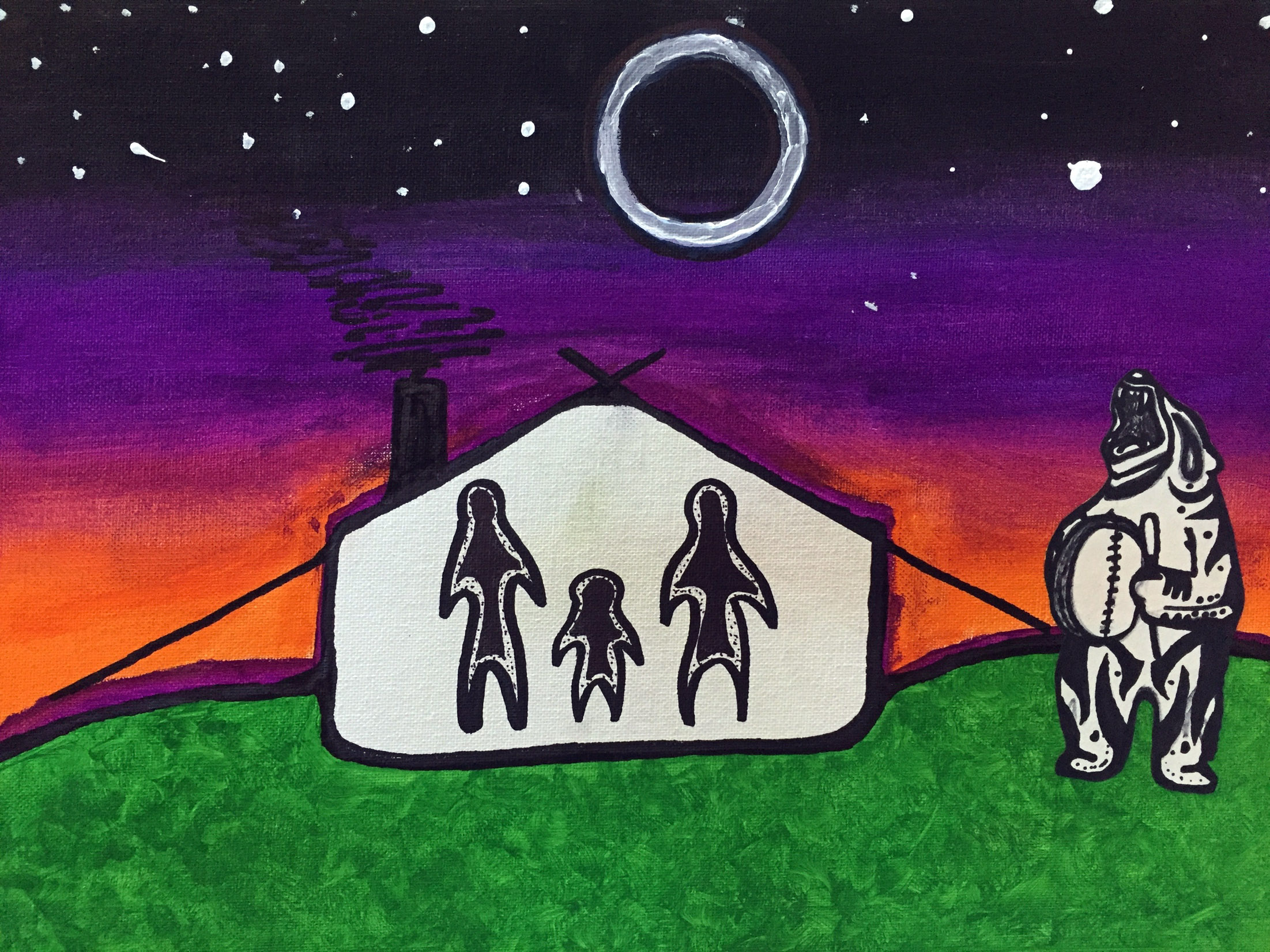
Mikwchiyam Art Concentration Program
Crime Prevention Fund
David Hodges first encountered Mistissini students as a visiting musician who worked with youth to mix and produce songs and music videos. The experience garnered David positive feedback from the participating youth who came away feeling inspired and hopeful, as well as from their parents who encouraged the kids to get creative. The Justice Funds program recognized David’s passion to reconnect youth and high-risk youth with creativity and to build a supportive artistic Cree community, as well as the value of this initiative as a crime prevention strategy.
In 2015, David’s new project was awarded Crime Prevention funding and the Mikwchiyam Art Concentration Program was launched. The innovative project focuses on bringing art into Cree School Board high schools through an artists-in-residency initiative aimed to inspire youth, encourage new methods of communication with and between the youth, and teach life skills such as accountability, perseverance, and ownership. This project has become a model to support crime prevention through the engagement of Cree youth.
Piloted in the Voyageur Memorial High School in Mistissini, David and the Mikwchiyam team have seen the youth, some high-risk, flourish through these new modes of expression, and the program has now grown to include two more high schools in Chisasibi and Waskaganish. Four artists (Indigenous and/or non-Indigenous) are welcomed over a seven-month period (October to March) exposing the students to a wide range of creative disciplines including music, multimedia, acting, dance, writing, painting, and more. Participating artists are chosen by a selection committee made up of representatives from the Cree School Board, the Department of Justice and Correctional Services, local Cree artists, and creative industry professionals.
The Mikwchiyam team works to ensure that the conditions for success are in place right from the beginning. Artists begin their role in the program by participating in a weeklong training in August. Teachers learn about and develop a collaborative process in order to best support the students. A room in each school is devoted to the program, serving as a studio space for students, artists, and teachers together. This creative space decentralizes the classroom, supporting youth in claiming program ownership, which in turn creates a positive attachment to school through feelings of belonging. The students want to be in class, creating art and learning from professional artists!
Students are given the opportunity to work closely alongside and learn from each artist, finding inspiration in various mediums and accessing an outlet where their concerns manifest as art. Artists are available to students for questions on logistics, artistic life, and to discuss and discover future possibilities. Each artist's residency ends with a showing of work produced with students. At the end of the school year students also each create an independent project. Through their art and creative inspiration, the students learn about accountability, commitment, how to brainstorm and develop ideas, recovering from mistakes, and executing their own projects – essential life skills that contribute to a solid foundation for the future.
The Mikwchiyam team started the program in Mistissini with seven youth completing the program, and by the start of the second year (2016/2017), 43 Mistissini students had applied. The students’ said that they found that they grew stronger after each relationship they developed with the artists and project they completed, and subsequently shared this experience and growth with the community. The youth, parents, and community are all very hopeful about the potential positive impact of this program.
“The program is like a tree with the first year being the roots with a focus on creating ownership,” says Katie Green, Program Director. “The second year is the trunk with a solid foundation building once everyone gets on board, and the third year is branching out, seeing how the school and students take more ownership and begin to define the program for themselves.” The team aims to have the fourth year centred on community ownership by hiring an on site program coordinator who will work to help build capacity amongst students and teachers.
The Mistissini Youth Chief also received Justice funding from the Youth Engagement Fund for the N'we Jinan Festival. Hosted by the Cree Nation Youth Council and Cree Nation of Mistissini Youth Council, the arts festival was held in June 2016 and was a joyous celebration of the students of this arts concentration program and other Cree youth. Ten youth from each of the Cree communities welcomed each other, bonded, performed and displayed their work, and felt at home with each other because of their collective creative voice and shared experiences. This provided the youth a public space to showcase their work and had a positive impact on the proceeding school year’s program in terms of recruitment and community participation. Certificates were made and presented to recognize students’ effort and achievement, and the youth felt a great sense of pride. The festival moves on to Chisasibi in the summer of 2017.
Overall the Cree School Board believes the results from the art concentration program are resoundingly positive with a rise in attendance and grades in all classes: with the introduction of this program the youth are coming to school more. One student's attendance rate rose by 47%; he truly feels that this art studio became his home, and the other participants, his family.
David and his team received resoundingly positive and hopeful feedback from the students and community alike: the program has bridged gaps between generations through new imaginative modes of communication, and parents see the boundless potential in their children. This program has shown great ability to build youth engagement and ultimately, crime prevention by strengthening community and social structures. The youth are seeing a new future filled with imagination, hope, and endless possibility.


